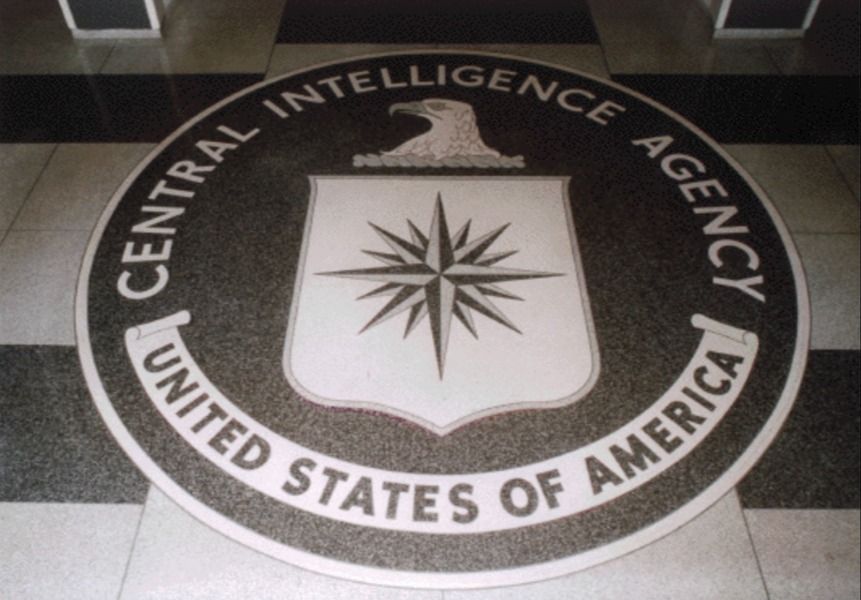Congress Has No Clothes: A Quick and Dirty Summary of the New FISC Opinion
Today’s release of two important FISC documents probably won’t generate the media frenzy that previous releases of NSA materials have sparked. As of this writing, the New York Times did not even have the story on its website’s home page. The breezy attitude towards this latest release is understandable enough. The documents don’t disclose a new program---or a new raft of government errors---after all.
Published by The Lawfare Institute
in Cooperation With

Today’s release of two important FISC documents probably won’t generate the media frenzy that previous releases of NSA materials have sparked. As of this writing, the New York Times did not even have the story on its website’s home page. The breezy attitude towards this latest release is understandable enough. The documents don’t disclose a new program---or a new raft of government errors---after all. In fact, they are a pretty exclusively good-news story for the government: A FISA judge writes a strong opinion in defense of the legality of the 215 collection that has been so controversial and, what’s more, treats the past compliance issues as, well, matters in the past.
Who needs that?
Yet the documents, particularly the opinion itself, are important---quite important. Up until now, we have had orders from the FISC requiring the production of metadata. And we have had government statements---a major speech and a white paper---in defense of the government’s (and the court’s) reading of 215. But we have not had any of the FISC opinions explaining the court’s actual reasoning regarding why this collection does not violate the Fourth Amendment and why it is consistent with the statute. Judge Claire Eagan’s opinion lays this out in a crisp, readable 29 pages.
Her opinion does something else too: It makes clear that Congress has nowhere to hide on this issue and that members cannot pretend to have had no idea of what NSA has been up to.
The following is a quick and dirty summary of the memorandum opinion, dated August 29, which explains the earlier July 19 order granting the government’s application to obtain "certain business records of specified telephone service providers” on a daily basis for 90 days, pursuant to Section 215 of the FISA.The opinion begins by noting that Judge Eagan’s review of the government's application included an “extensive hearing,” at which she “receive[d] testimony and evidence,” including “sworn testimony from personnel from the FBI and NSA.” The court issued its original memorandum opinion and primary order the next day---and this amended memorandum opinion followed a little more than a month later.
Judge Eagan continues with a summary of the requirements of the attached primary order. Of particular note here is a footnote Judge Eagan drops in describing how the order “requires the government to notify the Court in writing immediately concerning any instance of non-compliance.” The government had reported zero compliance incidents in the previous authorization period. And Judge Eagan writes that she “is aware that in prior years there have been incidents of non-compliance with respect to NSA’s handling of produced information. Through oversight by this Court over a period of months, those issues were resolved.”
Judge Eagan’s legal analysis starts with a Fourth Amendment discussion that, while entirely unsurprising to anyone with any kind of background in modern Fourth Amendment law, will probably surprise some people who have loudly denounced NSA’s activity. Many critics of NSA’s programs casually throw around the allegation that this sort of collection implicates---or shreds---the Fourth Amendment. But Judge Eagan clearly regards Section 215 as not presenting a close question under the law. The Fourth Amendment does not bar the government's proposed collection of telephony metadata, she writes, because the production "is squarely controlled by" Smith v. Maryland, in which the Supreme Court held that it was not a search for the government to install a pen register on telephone company equipment to capture non-content data concerning telephone calls. An individual has no legitimate expectation of privacy with respect to telephone numbers he dialed and thereby conveyed to the company, the Supreme Court concluded in Smith. Judge Eagan concludes that if metadata does not implicate an individual’s Fourth Amendment privacy interest in his telephony metadata, neither does the bulk collection of metadata about numerous persons. She writes, “where one individual does not have a Fourth Amendment interest, grouping together a large number of similarly-situated individuals cannot result in a Fourth Amendment interest springing into existence ex nihilo.”
Having dispensed with the constitutional question in fewer than four pages, Judge Eagan then turns to the statutory requirements that the government must meet under Section 215. Legally speaking, this is the heart of the opinion. It analyzes Section 215 specifically in relation to the Stored Communications Act, 18 USC § 2703, which governs production of similar material in criminal cases. Judge Eagan distinguishes the two based on what their language suggests about legislative intent. Specifically, she observes that under Section 2703(d), to acquire non-content records through a court order, the government must offer the court "specific and articulable facts showing that there are reasonable grounds to believe that . . . the records or other information sought are relevant and material to an ongoing criminal investigation." She contrasts this language with that of Section 215, which does not require "specific and articulable facts," nor that the information be "material." She concludes that the differences between the two provisions, which "apply to the production of the same type of records from the same type of providers," indicate that Congress intended that the FISC apply a lower standard to the government's Section 215 application than a court would in reviewing a Section 2703(d) request.
But other differences between the statutes, she notes, cut in the other direction---particularly the differences between the avenues through which a service provider might challenge the legality of the required production under the two laws. Section 2703(d) permits the provider to file a motion with the court where the requested production causes an undue burden; under Section 215, by contrast, Congress provided not a motion process but a complex statutory scheme for judicial review. That process not only includes the selection of a judge from a pool of FISC judges to consider the matter, but it also provides standards for the judge to apply during review and provides as well for the possibility of appeal. Judge Eagan writes that the “substantial and engaging adversarial process to test the legality of this Court's Orders under Section 215 . . . appears designed to ensure that there are additional safeguards in light of the lower threshold that the government is required to meet for production under Section 215 as opposed to Section 2703(d).” In other words, Judge Eagan argues, Congress consciously imposed higher "front-end protections" in the criminal investigative context under Section 2703(d) but created "post-production checks" under Section 215. Notably, Judge Eagan reports that despite these explicit statutory mechanisms, no record holder ordered to produce bulk telephony metadata under Section 215 has actually challenged the legality of the order.
The court goes on to examine the Section 215 requirement that "there [be] reasonable grounds to believe that the tangible things sought are relevant to an authorized investigation,” 50 USC § 1861(b)(2)(A)---and effectively declares the bulk metadata requested relevant insofar as “limited and controlled” queries of a complete dataset of such metadata may yield otherwise unobtainable information about terrorist operations:
Because known and unknown international terrorist operatives are using telephone communications, and because it is necessary to obtain the bulk collection of a telephone company's metadata to determine those connections between known and unknown international terrorist operatives as part of authorized investigations, the production of the information sought meets the standard for relevance under Section 215.
Significant to the court's analysis is the fact that Congress chose not to define the term "relevant," as well as the fact that bulk collection is necessary for NSA to deploy its particular set of analytic tools. The court stresses that there are no realistic alternatives to deeming all of the bulk metadata in question relevant: "to wait until the specific identifier connected to an international terrorist group were determined" would be to lose the historical connections that constitute the entire purpose of the authorization. Though the court concedes that "relevance" under Section 215 presents a low hurdle, the court stresses that the relevance finding is "only one part of a whole protective statutory scheme" that institutes significant minimization procedures and mechanisms for statutory challenge by the records holder.
Perhaps the most remarkable feature of the opinion is Judge Eagan’s insistence that Congress cannot run away from her interpretation of the statute. In a section entitled “Legislative Re-enactment or Ratification,” she notes pointedly that Congress has reenacted Section 215 despite being fully aware of how the government and the court have interpreted it. Prior to the May 2011 congressional votes on the reauthorization, she reports, Congress received a report on the bulk collection program, which “provided extensive and detailed information to the Committees regarding the nature and scope of this Court’s approval of the implementation of Section 215 concerning bulk telephone metadata.” The report specifically asked that all members of Congress have access to information about the program. “It is clear . . . that the Report would be made available to all members of Congress and that HPSCI, SSCI, and Executive Branch staff would also be made available to answer any questions from Members of Congress,” Judge Eagan writes. “In light of the importance of the national security programs that were set to expire, the Executive Branch and relevant congressional committees worked together to ensure that each Member of Congress knew or had the opportunity to know how Section 215 was being implemented under this Court’s Orders.” The reauthorization of the law without amendment thus offers, she concludes, additional reason for the court to adhere to its prior interpretation of Section 215.
All told, it’s an excellent opinion for the government. It affirms the program’s legality. It pulls the folding screen away from Congress even as members seek delicately to change, leaving them nakedly implicated in a program whose memory they seem so eager to abandon on the laundry pile. And it makes clear that compliance questions are, from the court’s point of view, old news---matters that may have provoked harsh language a few years ago but from which the court has moved on.
It’s actually an illuminating and important coda to everything we have been reading about in these declassified documents.Too bad nobody’s reading it.
UPDATE: Over at the Volokh Conspiracy, Orin Kerr argues that "part of the opinion was persuasive but most of it was unpersuasive." His critique is well worth a read.
UPDATE II: The New York Times, some time last night after this post, published this article on the decision. The article is on the paper's front page this morning in the print edition.



_-_flickr_-_the_central_intelligence_agency_(2).jpeg?sfvrsn=c1fa09a8_5)


